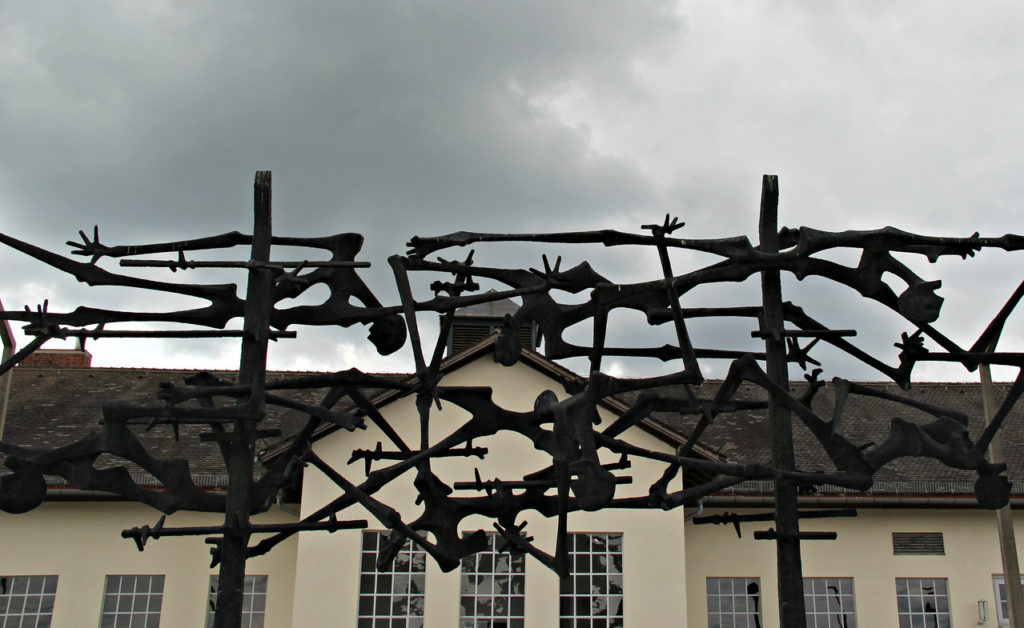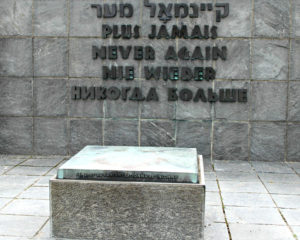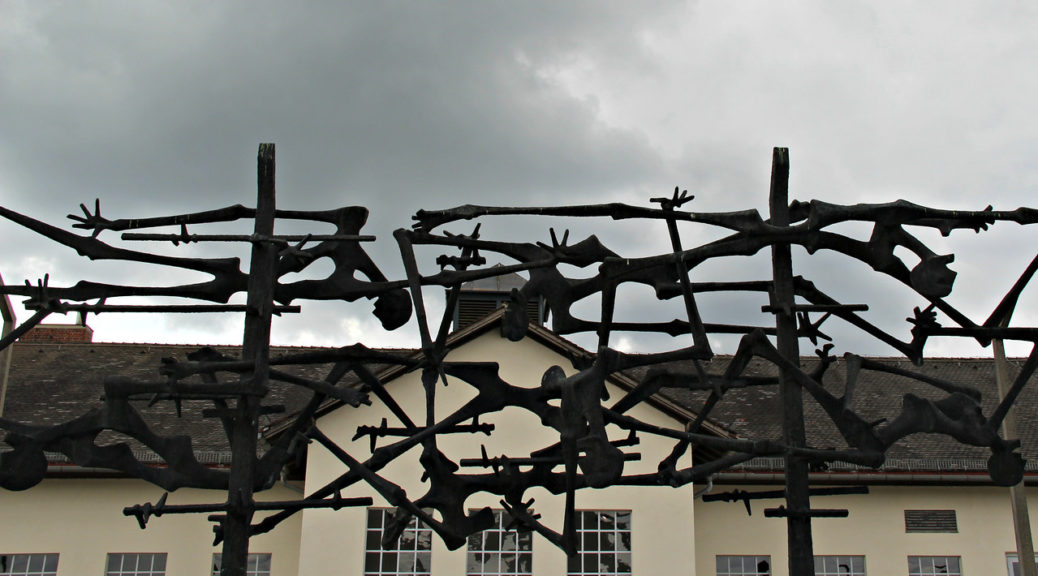
Dachau Concentration Camp Memorial
We went on Tauck’s Alps and Dolomites tour in 2015. The tour would ultimately take us into Germany, Austria, Italy, Switzerland and Liechtenastein. We flew into Munich and arrived a day before our tour was scheduled to begin. Before we left home, I had booked an independent tour to the Dachau Concentration Camp Memorial. Our guide met us at our hotel and then accompanied us on a short train ride and bus ride to Dachau. A tour of Dachau has since been added to the Alps and Dolomites tour.
I had been in Germany, Switzerland and Austria on a tour through my university 41 years ago and had actually visited Dachua then. As I remember, the 1974 tour had a different focus than the one we were now taking. What I remember most about my first tour was an emphasis on the atrocities the prisoners suffered at Dachau. Our current tour was led by a historian. His focus – and much of that in the museum – was on the circumstances that had led to the rise of Nazism in the hope that the atrocities I learned about on my initial visit would never happen again. Certainly both messages are important.
We entered the Memorial just as the prisoners would have entered the concentration camp, through the gate in the first picture. The wording (see second picture) is translated, “Work will set you free.” Inmates who were physically able were assigned work, often manufacturing the weapons that would be used in Germany’s war efforts. Dachau also had satellite camps closer to munitions factories where some prisoners worked.
After walking through the gate, we saw the monument in the third picture. Designed by Nandor Glid, a concentration camp survivor, it was dedicated in 1968.
Dachau first held political prisoners, but other groups followed including people who were viewed as not fitting into the “Volk Community” or the people’s community – perhaps because of how they looked, acted or believed. This was the justification for the imprisonment of homosexuals, gypsies and Jehovah’s Witnesses. Many clergy (the majority were Catholic priests) were also confined at Dachau due to concern for their spiritual influence and the resistance they might rally (when I visited in 1974, my group met a Lutheran minister and former prisoner at the Protestant memorial site). Initially there were few Jewish people imprisoned here, but the camp was expanded and about 10,000 Jews were confined at Dachau in 1938. Dachau was “the model” for other concentration camps and also served as a training facility for SS concentration camp guards.
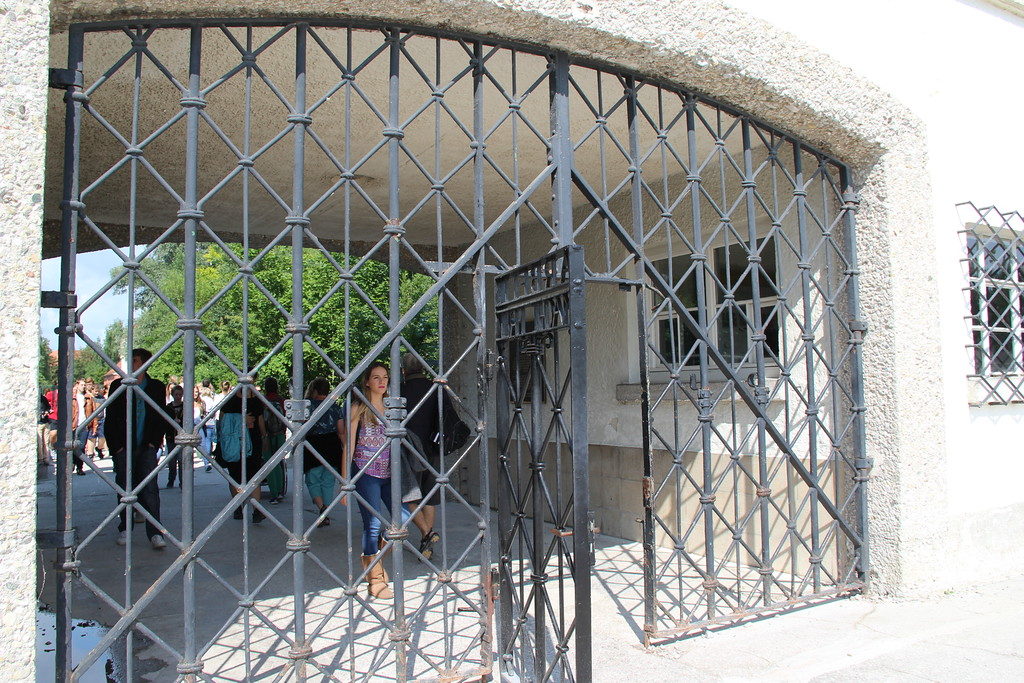
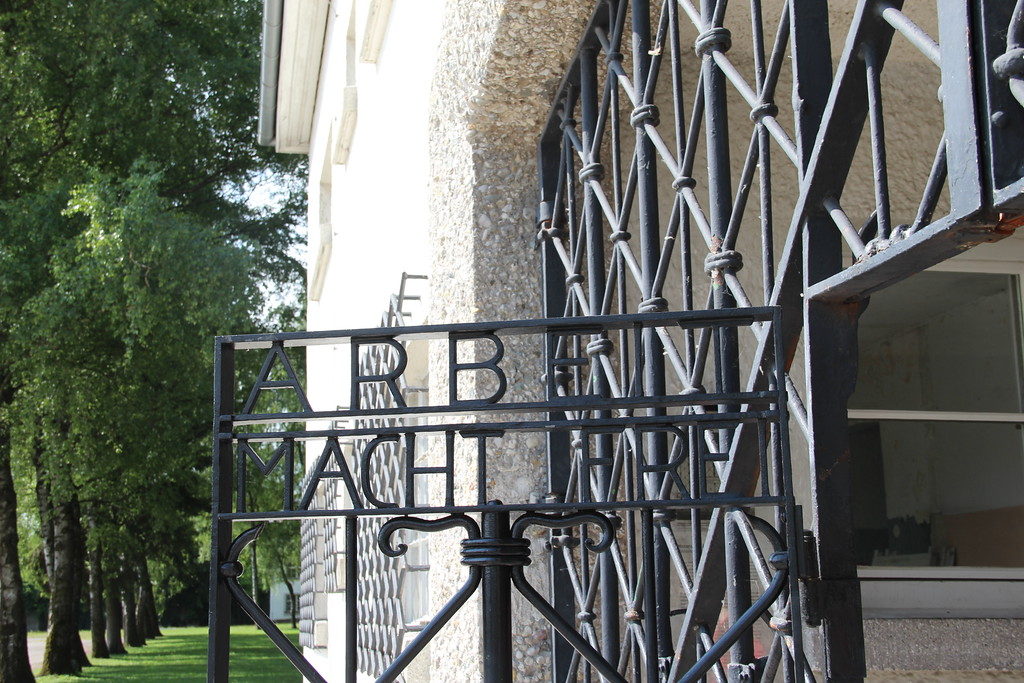
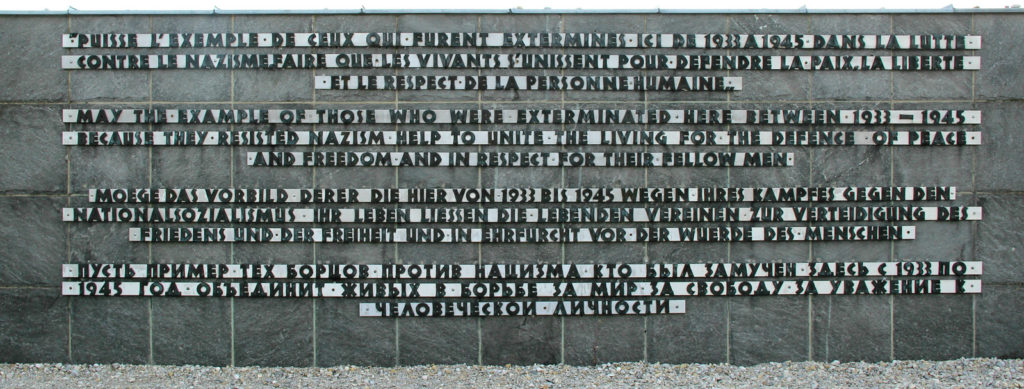
We next went to what was once the Maintenance Building. It now houses the exhibits I earlier referred to as the museum. It was here where we learned of the economic issues that Hitler used to take and wield his power. Economic conditions resulted in a few “winners” while the majority of people lived in poverty. This divisiveness resulted in unrest and the ultimate rise of power of the National Socialist German Workers’ Party (in German, the NSDAP) more commonly known in the US as the Nazi Party. I took pictures of some of the display boards documenting the history – these follow, along with a poster that is translated, “Our last hope: Hitler.”


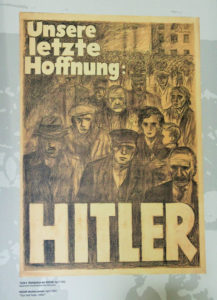
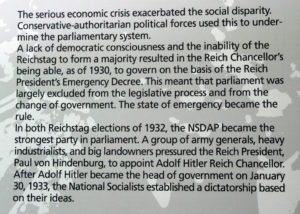
The next picture represents the shunt room, which is where prisoners were checked into the Dachau Concentration Camp. There were tables down the middle of the room. Prisoners stripped on the window-side of the tables and then turned in any jewelry, money etc. at the tables. On the other side of the tables, they were registered. The desk in the second picture shows where they were registered. The registration process included assigning the prisoner a number. Custody orders were also received indicating the reason for the prisoner’s internment. Cards were kept on all the prisoners. Here it was recorded who was in the camp and who had died.
Based on the custody order, prisoners were classified according to the reason for their imprisonment. The third picture shows the emblems that would have been sewn onto their uniforms. For example, political prisoners had an inverted red triangle, Jehovah Witnesses had purple triangles, and homosexuals had pink ones. Jewish people had two yellow triangles, one inverted forming a star. An exception to this would be if the person also fell into another category. For example, a Jewish person who was also a political prisoner would have a yellow triangle and an inverted red one. Finally there is a picture of two uniforms that were on display.
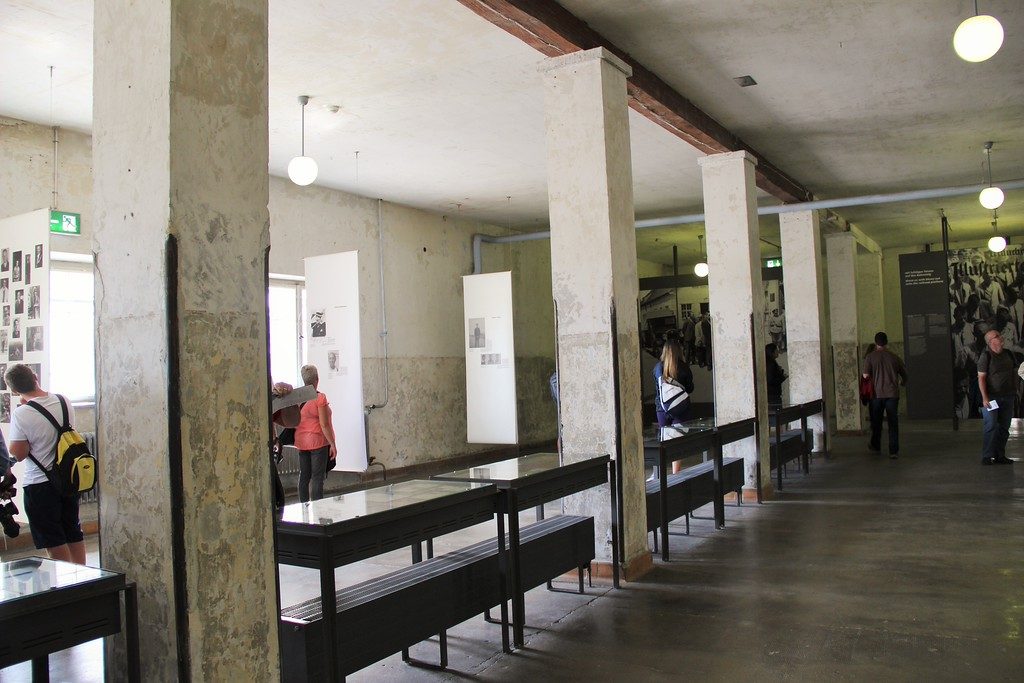
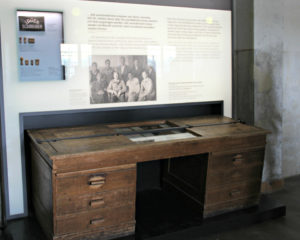


Thirty-four barracks were located on either side of the camp road. Today, the location of each of these barracks is numbered and marked by a stone foundation. Some of the barracks served as a medical facility, however medical services were described as inadequate. One of the barracks was used for medical experimentation. Referring to these experiments, a survivor stated, “Atrocities were committed here which surpassed all the other cruelties carried out in German concentration camps.” When I visited in 1974, pictures of some of these experiments were displayed – I did not them during our current visit.
We could also see the perimeter fence from here. There were seven towers from which guards could see if a prisoner entered the prohibited zone. If they did, they would be shot. We were told some prisoners deliberately entered the zone to end their suffering. Finally, there is a picture of a picture which was in the exhibit area showing prisoners outside of the barracks.
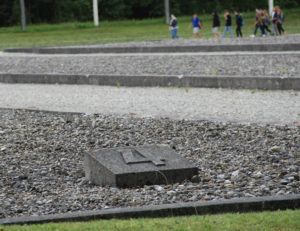

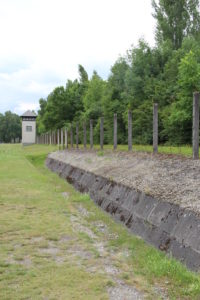
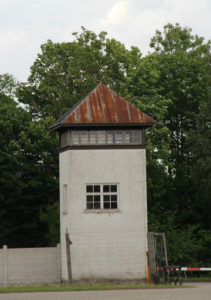
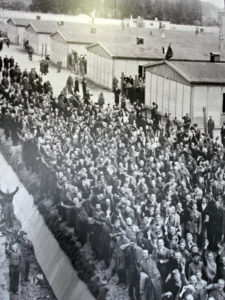
After prisoners had finished the registration process, they went to the prisoner baths where they showered, were disinfected and had their heads shaved. They left with their uniform and then were sent to their barracks. Prisoners were allowed to shower about once per week, although not as often in the last years Dachau was open. The prisoner baths were also where a punishment called “pole hanging” occurred. Prisoners had their hands tied behind their back with a chain. The other end of the chain was attached to a hook on wooden beams in the ceiling. The prisoner had to stand on a stool which was then kicked out from under them. Many did not survived this punishment or suffered lasting damage to their shoulders and wrists.
We also visited the Crematorium. The middle section of the Crematorium was disguised as a shower but actually was constructed to be a gas chamber. Our guide told us the facility was never used as a gas chamber, however there is conflicting information about this. Some survivors say the gas chamber was used a few times. The second picture is of this facility. We were told gas pellets could be introduced through the “trays” on the the side of the building and that the multiple vents on the roof were to release the gas from the building.
The third picture is of the Crematorium. The ovens were used to dispose of corpses around the clock. Toward the end of the war, the ovens did not have the ability to cremate all of the bodies. When the camp was liberated, many bodies were found stacked up in the Crematorium. The last picture is a monument outside of the Crematorium. It is translated, “Remember how we died here.”
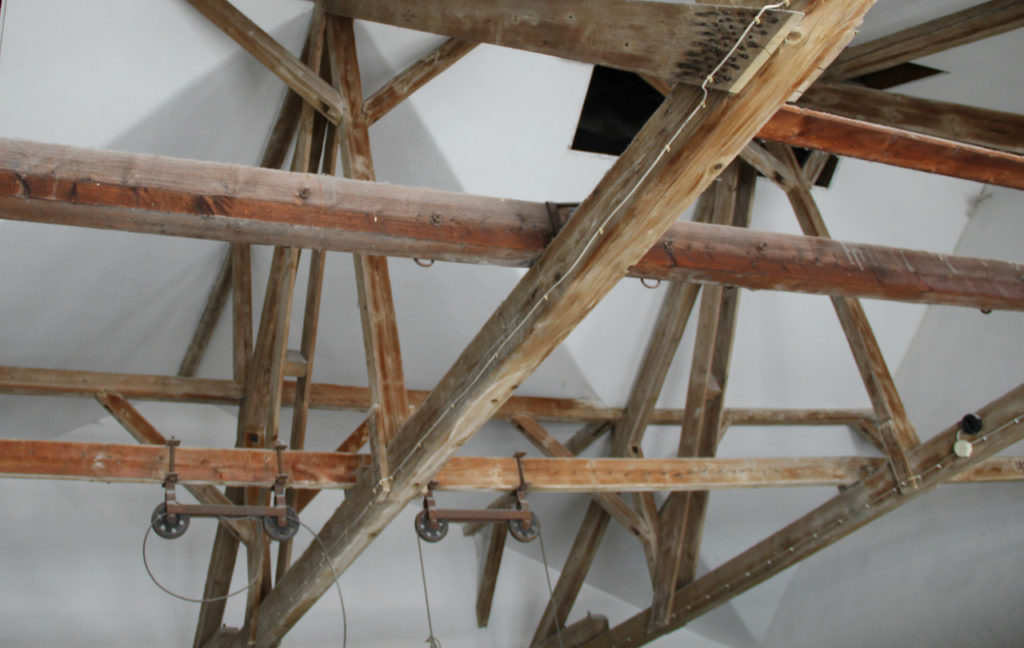

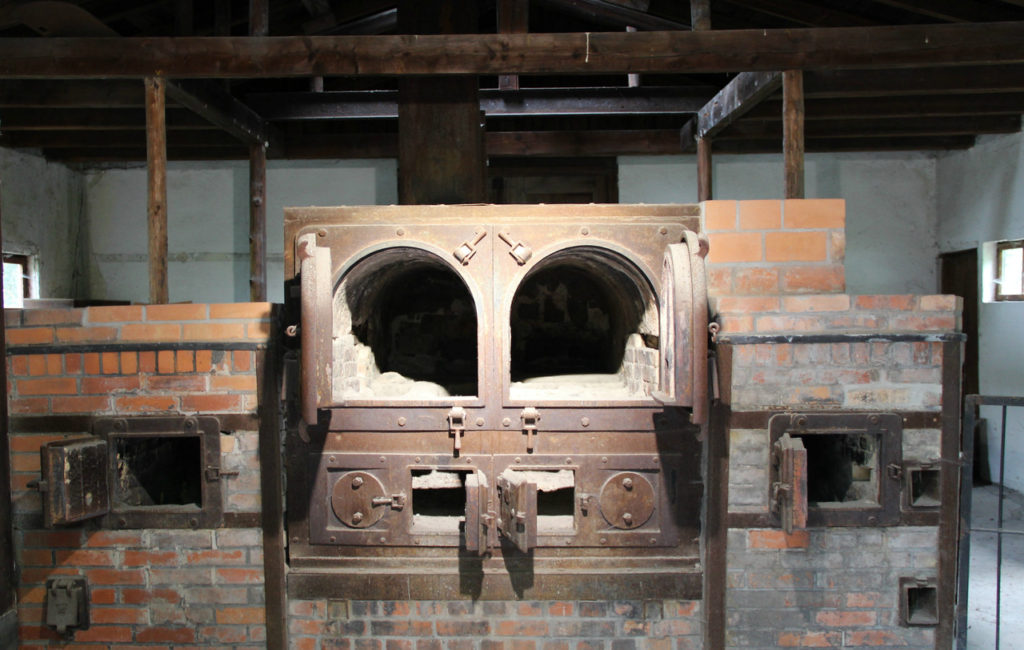
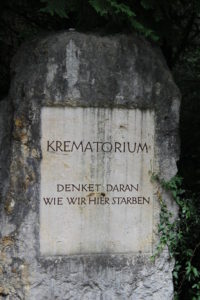
At the end of the camp road there are now several religious memorials. The first picture is of the Mortal Agony of Christ Chapel. It was the first religious monument built here and was dedicated in 1960. There are several other memorials including the Protestant Church of Reconciliation, a Jewish Memorial and a Russian Orthodox Chapel. The International Memorial is also pictured here and represents prisoners who died at Dachau. The fence posts and barbed wire represent their imprisonment. The third picture is another memorial which includes the words, “Never Again” in five languages. Ashes of some of the prisoners found in urns when Dachau was liberated are interred in the box. The last picture is a statue of the Unknown Inmate. Created in 1950, it was the first memorial at Dachau. The words below the statue are translated, “To honor the dead, to admonish the living.” Hopefully we have learned from Dachau – that the atrocities suffered by so many will not be repeated and that we will have respect for all persons regardless of how they look and what they believe.

